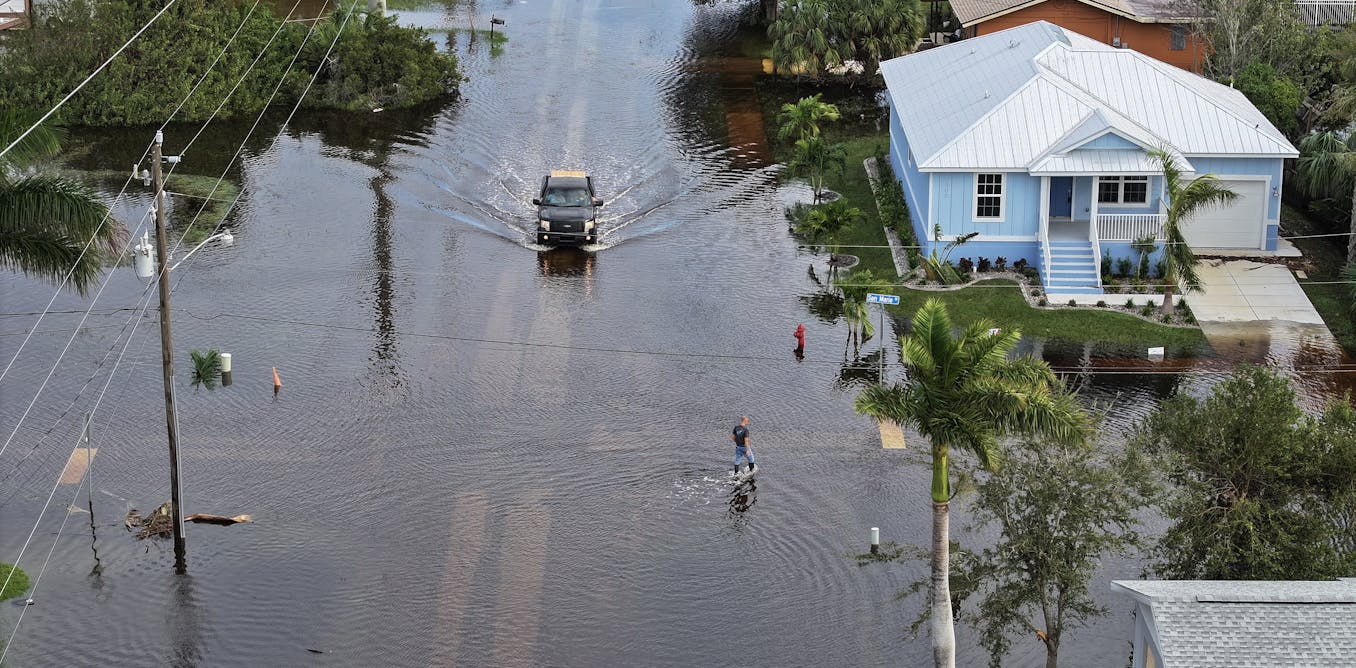Delhi is reeling from the most extreme heatwave India has ever seen. While the record-breaking maximum recorded temperature of 52.9°C has been called into question by India’s Meteorological Department, it’s entirely possible. The city has been sweltering, with top temperatures ranging from 45.2°C to 49.1°C, at the limit of human endurance.
This event follows hot on the heels of extreme heatwaves across Asia as well as the Sahel in Africa.
Climate scientists have long warned these days would come. The recent acceleration in warming means it’s happening sooner than we expected. So we need to work harder and faster to reduce greenhouse emissions and get global heating under control.
Fortunately, India’s current heatwave conditions are expected to ease over the coming days. But the death toll is likely to rise, as people succumb to multiple health effects. Extreme heat has a long tail of destruction. Almost every chronic health condition is made worse by exposure to such temperatures.
Australians should take note. We are not safe, and we need to prepare for heat to hit us just as hard. It could even be worse here, because people with air conditioning can be lulled into a false sense of security. There’s no guarantee these air con units will extract enough heat to effectively cool our living and working areas, and electricity networks can fail.
What does extreme heat do to people?
When you’re hot, your body tries to cool off by sweating. This involves sending blood to the surface. Blood vessels at the skin dilate and the skin looks flushed, but this causes your blood pressure to fall. The heart has to work harder.
We need to keep our core temperature around 36–37°C. If the surrounding air is hotter, the body’s efforts to cool down can do just the opposite and absorb more heat. This is made worse during exercise, when 80% of the energy produced by working muscles is heat.
When we cannot shed that extra heat, our core temperature increases. At the microscopic level, cellular damage occurs. Extended heat exposure can lead to organ failure and death.
The “wet bulb globe temperature” factors in the humidity of the atmosphere. High humidity means the air is already saturated with water, so sweat on our skin doesn’t evaporate and we don’t get that cooling mechanism.
That’s why 33°C in dry Melbourne can be warm but tolerable, but 33°C in Darwin can feel stifling.
It’s not as if we could climb into an oven and be ok though, just because an oven is dry. There’s a dry heat maximum, which varies from person to person depending on their overall health and fitness. There is no particular temperature at which we can say a certain proportion of people will die, because there are so many variables.
In public health we talk about extreme heat having a “long tail” in a statistical sense. The number of excess deaths spikes during and immediately after the heatwave, but death rates don’t drop back to zero straight away. Organ damage is a likely cause. Mass heat death events are a relatively new phenomena, so the detailed understanding of the physiological mechanisms is still lacking.
India: hot and humid on the campaign trail
The India Meteorological Department installed more automatic weather stations across Delhi and the national capital region during the summer of 2022.
Wednesday’s maximum temperature ranged from 45.2°C to 49.1°C, except for Mungeshpur on Delhi’s northwest outskirts, which reported 52.9°C. As this was an outlier compared to other weather stations, the Department said it could be due to an error in the sensor.
However, it’s also possible Mungeshpur is a genuine hotspot due to local heat generation and trapping – the so-called “heat island effect”.
Delhi is crowded, hot and humid with limited access to air conditioning. What’s more, people have been coming out in the heat during India’s elections.
In previous heatwaves across India and Pakistan, many thousands of people died in their homes. It’s unclear what the ultimate death toll from the current heatwave will be.
The message for other nations
Clearly it’s time for other hot countries to ramp up their own heatwave preparations.
Australia, for example, is vulnerable to extreme heat, not just because of its hot climates but also because people acclimatise to their average local conditions. Problems arise when the weather is extreme for a particular location.
Tasmanians can succumb to temperatures regarded as normal for people in Broken Hill, New South Wales. Human tolerance for heat is variable, and can vary markedly within each individual, depending on their fitness level, stage of life, familiarity with heat and capacity to regulate their core temperature.
Climate science, modelling and human physiology may be complex, but how we must respond is simple. Everyone should be familiar with the signs and symptoms of heat stress, first aid treatment and when to call an ambulance. This includes school-aged children who may be the first to encounter their parent in strife.
People most at risk include those who are working outside or caring for others, travelling long distances, suffering from chronic illness, or simply ill-informed about the dangers of extreme heat.
Climate change is here, now
Climate scientists have been warning the world about the dangers of extreme heat for decades. It’s just going from bad to worse.
The Delhi heatwave is further evidence that climate modelling has been largely underestimating the speed and intensity of global warming.
Heat beyond the limits of human endurance is no longer a distant dystopian future. It’s here and now.

The post “The Delhi heatwave is testing the limits of human endurance. Other hot countries should beware and prepare” by Liz Hanna, Honorary Associate Professor in Environmental Health, Australian National University was published on 05/31/2024 by theconversation.com





































